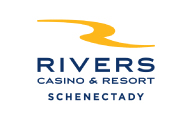News
October 3, 2018State Museum Hosts Lunchtime Talk Series “Brain Food for the Curious”
New York State Museum historians and scientists will share their knowledge and research in a series of lunchtime talks this fall and winter. “Brain Food for the Curious” will be held select on Tuesdays in October through March, from 12:10 – 12:40 p.m., in the Huxley Theater. Each program includes a 20-minute talk with a State Museum historian or scientist followed by a question-and-answer period. Attendees are encouraged to bring their lunch.
Following is a schedule of “Brain Food for the Curious” talks for the 2018-19 season:
70 Years of Racing History at Watkins Glen
Tuesday, October 9
In 1948 the first postwar road racing event in the United States was held in and around the village of Watkins Glen, N.Y. Seventy years later auto racing is still a driving force for this small Finger Lakes community. Join History Curator Stephen C. Loughman as he explores 70 years of auto racing history at Watkins Glen.
Wonders of the State Museum
Tuesday, October 16
The New York State Museum has evolved and changed many times over its 183-year history. For more than 60 years of its history the museum was housed on the fifth floor of the Education Building and looms large in the memories of those who visited there. Join History Technician Kara Chambers as she covers major milestones in the history of the State Museum.
Take a Tour of the Grand Erie Canal in the 1820s
Tuesday, October 23
Learn about travel as a tourist on the Erie Canal with Senior Historian and Curator Brad Utter. Using guide books from the 1820s, take a theoretical trip along the canal from New York City to Buffalo.
A Sneak Peek of the Historic Woodstock Art Colony/Arthur A. Anderson Collection and Exhibition
Tuesday, October 30
Long before the 1969 music festival, Woodstock was home to an art colony that was founded in 1902 and is still flourishing today. The remarkable range of work produced there has been the focus of collector Arthur Anderson for three decades. He recently donated his entire collection, some 1,500 objects by 170 artists, to the State Museum. Join Senior Historian and Museum Curator of Art and Culture Karen Quinn for a sneak peek of both the collection and the forthcoming exhibition opening in November.
Tourmaline: Beautiful and Versatile
Tuesday, November 6
The tourmalines are chemically one of the most complicated groups of silicate minerals. Because of their properties, physicists in the 18th century considered them a key to connecting theories on heat, electricity, optics, and magnetism. Dr. Marian Lupulescu, curator of geology, will guide you on a journey through the beautiful tourmaline world.
Early Watercraft in the Northeast
Tuesday, November 20
Boatbuilding and water-borne travel have a long history in the Americas, pre-dating the arrival of European explorers by millennia. Seafaring and travel along inland waterways likely played a key role in the earliest settlement and dispersal of human groups throughout the Western Hemisphere. Join archaeologist Dr. Daria Merwin for a look at the archaeological and historical evidence of early watercraft in the Northeast.
Meltwater Mayhem and the Last Ice Age
Tuesday, December 11
The last Ice Age culminated with complete burial of New York State by the Laurentide Ice Sheet about 25,000 years ago. Join Dr. Andrew Kozlowski, Curator of Quaternary Landscape Materials, as he provides an overview of large-scale floods, landforms, and landscape produced by spectacular meltwater events in New York State.
What is Ethnography, and Why Is It Important to the NYSM Contemporary Native Art Collection?
Tuesday, December 18
Have you ever wondered what a cultural anthropologist at a museum actually does? Why is there an ethnology collection at the State Museum, and what is in it? Meet Dr. Gwen Saul, curator of ethnography and ethnology, and learn more about the collections and current ethnographic research.
The Snails Have Landed! Meet New York’s Terrestrial Snails
Tuesday, January 8
New York is home to over 100 species of land snails, yet these fascinating mollusks are often overlooked. Where do they live? What evolutionary adaptations have allowed them to live on land? Museum Malacologist Dr. Denise Mayer will discuss these and other questions, offering a glimpse into the intriguing lives of New York’s land snails.
Objects of Slavery and Freedom in the New York State Museum’s Historical Archaeology Collection
Tuesday, January 22
This talk will focus on cowrie shells (shells used as money or adornment) and bilboes (iron restraints) in the historical archaeology collections. Curator of Historical Archaeology Dr. Michael Lucas will use these examples to discuss their general role in the transatlantic slave trade and will then look at how these objects were also used or re-interpreted as symbols of liberation and freedom.
Mystery of the Missing Ice Age Predators of New York
Tuesday, February 5
Surprisingly, New York has no predator fossils that date from the Ice Age. But, could we expect to have had species such as the iconic sabertooth tiger or dire wolf? Curator of Pleistocene Vertebrate Paleontology Dr. Robert S. Feranec will discuss why there aren’t any fossil predators known so far, as well as what species we might expect to find.
Late Pleistocene Peoples in Western New York
Tuesday, February 19
When, how, and from where did Native Americans migrate into western New York? Dr. Jonathan Lothrop, curator of archaeology, reviews current archaeological evidence for the presence of first peoples in this region, their relationships with Paleoindian groups in eastern New York and beyond, and their adaptations to the Ice Age landscapes of western New York.
Time-Traveling to the Catskills – 380 Million Years Ago
Tuesday, March 5
Join Curator of Sedimentary Rocks Dr. Chuck Ver Straeten on a time travel journey to the Catskills 380 million years ago. Just before you push “GO,” picture today’s Catskills. In contrast, you arrive on a broad lowland with winding rivers, and broad floodplains slope gently westward to a coastline near Oneonta, beyond which a shallow sea extends west to Iowa. Looking east, four-mile-high peaks jaggedly cut high into the sky. Forests of odd trees and shrubby vegetation dot the lands, populated only by small insects, centipedes, and spiders.
Natural History Collections, Next-generation DNA Sequencing, and the Evolution of Birds
Tuesday, March 19
Are penguins closely related to ducks? Are flamingos just goofy-looking herons, or are they something completely different? Curators of bird-specimen collections study the evolutionary relationships of birds using the fossil record and modern DNA-sequencing technologies. Dr. Jeremy Kirchman, NYSM’s curator of birds, will explain how a new revolution in DNA laboratory methods has changed what we know about bird evolution.
Earth’s Earliest Life
Tuesday, March 26
The simplest lifeforms on Earth today are bacteria, and it is likely that Earth’s first living organisms were similar. But how do we recognize something as small and simple as a bacterium in the fossil record? State Paleontologist Dr. Lisa Amati will present evidence about when and where the first life evolved on Earth and how we identify it.
The State Museum is a program of the New York State Education Department’s Office of Cultural Education. Located at 222 Madison Avenue in Albany, the Museum is open Tuesday through Sunday from 9:30 a.m. to 5:00 p.m. It is closed on the Fourth of July, Thanksgiving, Christmas, and New Year’s Day. Admission is free. Further information about programs and events can be obtained by calling (518) 474-5877 or visiting the Museum website at www.nysm.nysed.gov.


























